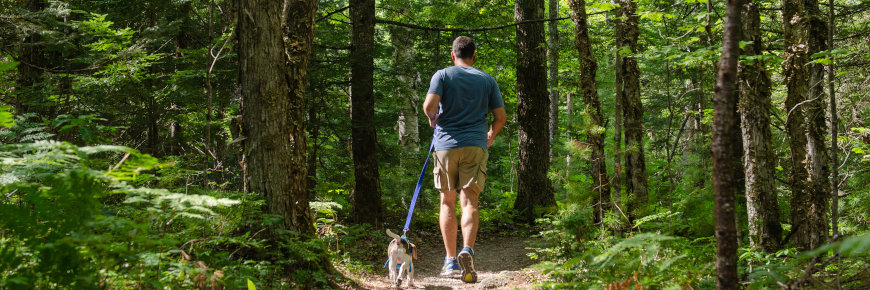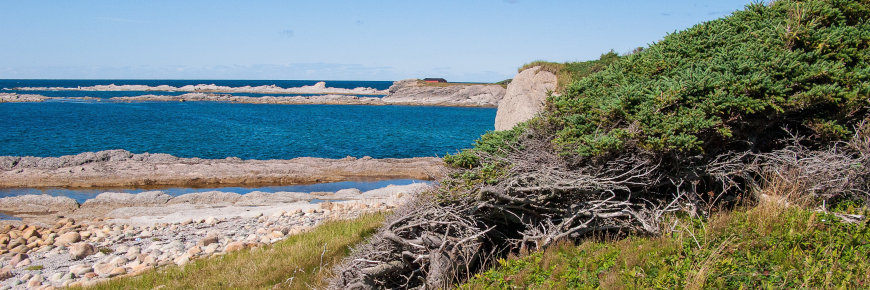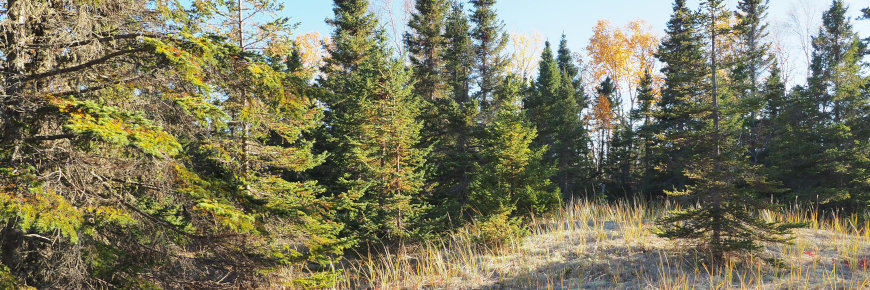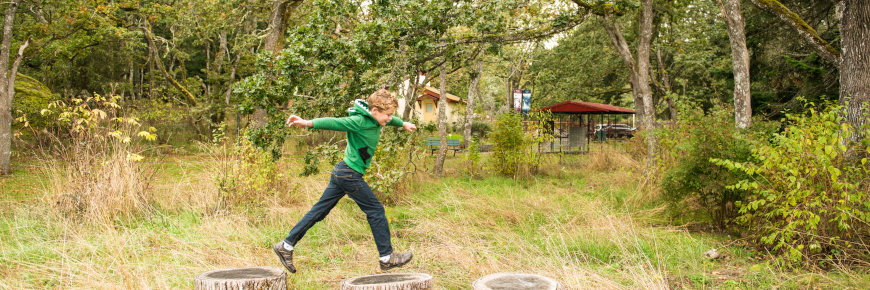Take a dip with Parks Canada… in the forest
In Japan it’s called shinrin-yoku, “forest bathing.” It’s the practice of taking in the atmosphere of the forest using all your senses, slowly and mindfully.
Scientists have found that forest bathing can reduce levels of stress hormones in the body. Some studies have also suggested that phytoncides (natural chemicals released by trees) can boost the immune system. More generally, researchers have found that being in nature can improve mood, attention and problem-solving skills.
Here are five walks that will let you experience different kinds of forest—and learn a bit about forest conservation along the way.
1. Hemlocks and Hardwoods trail, Kejimkujik National Park and National Historic Site, Nova Scotia

Ready for slowness? Take a walk among 300-year old hemlock trees and savour the deaccelerated life.
“A steady, reliable presence in the Acadian forest,” is how Parks Canada’s Donna Crossland describes the eastern hemlock. Tall and stately, with prehensile roots that grip onto rock, eastern hemlock anchors this ecosystem.
Kejimkujik’s eastern hemlock forests are under serious threat from the hemlock woolly adelgid (HWA), an invasive aphid-like insect. Park authorities are working to control the spread of HWA through measures such as phytosanitation (trimming branches to minimize contact with people, pets and vehicles) and banning imported firewood. They are also collaborating with partners, including the Mi’kmaq of Nova Scotia, to protect and restore this vital habitat.
The Hemlock and Hardwoods Trail at Kejimkujik, a five-kilometre loop, takes the visitor on a memorable journey among some of Nova Scotia’s oldest trees.
Did you know? Trees make oxygen, cleanse the air, keep cities cool, capture and store carbon, support ecosystems, and inspire structural engineers with their glory-crowned architecture. Healthy forests keep us healthy—and inspired!
2. Steve's Trail, Gros Morne National Park, Newfoundland and Labrador

To walk in Gros Morne is to experience “tuckamore.”
You probably don’t know that word unless you’re from Newfoundland and Labrador. Tuckamore refers to the stunted trees (mainly spruce and fir) that grow along the coast and in alpine areas. Frost and wind nip back the trees’ exposed branches, giving them their wind-swept profile.
Steve’s Trail in Gros Morne will take you through a tuckamore forest to the mouth of Western Brook and to a seaside meadow. Breathe in the resinous scent of conifers; hear the crash of breakers on the beach; take in the stunning views of the park’s northern coastline. And be heartened by the sight of tuckamore, the plucky goblin children of the tree world, hunkering down against wind, cold and time.
Did you know? Following the example of Parks Victoria in Australia, Gros Morne has launched an initiative called “Healthy Parks Healthy People.” Check out the 25 things you can do at Gros Morne to improve your health.
3. La Taïga Trail, Forillon National Park, Québec

An unusual kind of forest awaits the visitor on this short, easy walk. La Taïga Trail takes you along the Penouille Sand Spit, home to a barren boreal forest or taiga.
This kind of forest is rarely found at this altitude or elevation. “Walking this trail,” says Daniel Sigouin, team leader ecologist at Forillon, “you have the impression that you’re in the North… but you’re hearing waves, too.”
Taiga has taken root here because of the harsh conditions and sandy soil. The forest consists mainly of smallish conifer trees (balsam fir, black spruce, and white spruce). Lichen carpets the ground among the trees; being rootless, it can thrive in the poor soil.
Go on a weekend getaway. Find peace among trees as you explore other prime forest bathing locations throughout the calm wilderness of Forillon National Park.
Did you know? Nature journaling—writing down your observations and sketching what you see—is a good way to capture the rich detail of the forest. It’s also a good way to develop the habit of noticing, so essential to appreciating nature.
4. Garry Oak Learning Meadow, Fort Rodd Hill and Fisgard Lighthouse National Historic Sites, British Columbia

Abundance. That’s the word that comes to mind when walking through this quilt of trees, meadow and wildflowers.
A Garry oak ecosystem harbours more plant species than any other land ecosystem in coastal British Columbia. Coast Salish First Nations have traditionally depended on Garry oak habitat as a source of food and tool-making materials.
Wildlife also depends on it: some 43 species found in Garry oak ecosystems are listed under Canada’s Species at Risk Act.
But these ecosystems have been reduced to 5 per cent of their original extent in Canada.
To educate the public about the importance of this habitat, Parks Canada created the Garry Oak Learning Meadow at Fort Rodd Hill and Fisgard Lighthouse National Historic Sites. Take a stroll through this special place and open your soul to an oasis of calm.
Did you know? Some scientific research has suggested that natural spaces can enlarge our sense of time. In a paper entitled "Time grows on trees," psychologists Mariya Davydenko and Johanna Peetz of Ottawa’s Carleton University found that participants in their studies overestimated the time it took for a walk in a natural setting. In contrast, participants accurately estimated the duration of an equally long walk in an urban setting.
“In sum,” write the researchers, “our studies suggest that nature exposure can slow down time perception.”
5. Paget Fire Lookout Trail, Yoho National Park, British Columbia

High on a mountain slope, a whitebark pine stands its ground against the elements: strong winds, snow and cold.
This long-lived, charismatic tree—a sculpture on the theme of toughness—is vital to the mountain ecosystem. Its seeds are high-energy food for birds, squirrels and bears. It stabilizes slopes and holds onto the snow pack, making water available to other plants.
But whitebark pine (along with its cousin of the slopes, limber pine) is in decline across the mountain parks. These two pines face a number of threats, including a fungal disease called blister rust, infestations by the mountain pine beetle, historic fire suppression, and stresses such as drought that are aggravated by climate change.
This guided hike to Paget Fire Lookout is an experience in “sky bathing” as much as forest bathing. It will take you through some stunning mountain vistas as well as stands of whitebark and limber pine. On the way, you can participate in research that is helping protect the pines. You can also learn about many other wildlife species and their surprising connections, from grizzly bears to fungi.
Did you know? Whitebark pine cones need help to open and release their seeds. The Clark’s nutcracker provides that help. It uses its sharp pointy beak to pluck the seeds out of the cones, eats them and then stores the leftovers in the ground for later. The seeds it forgets to collect grow into new trees.
- Date modified :